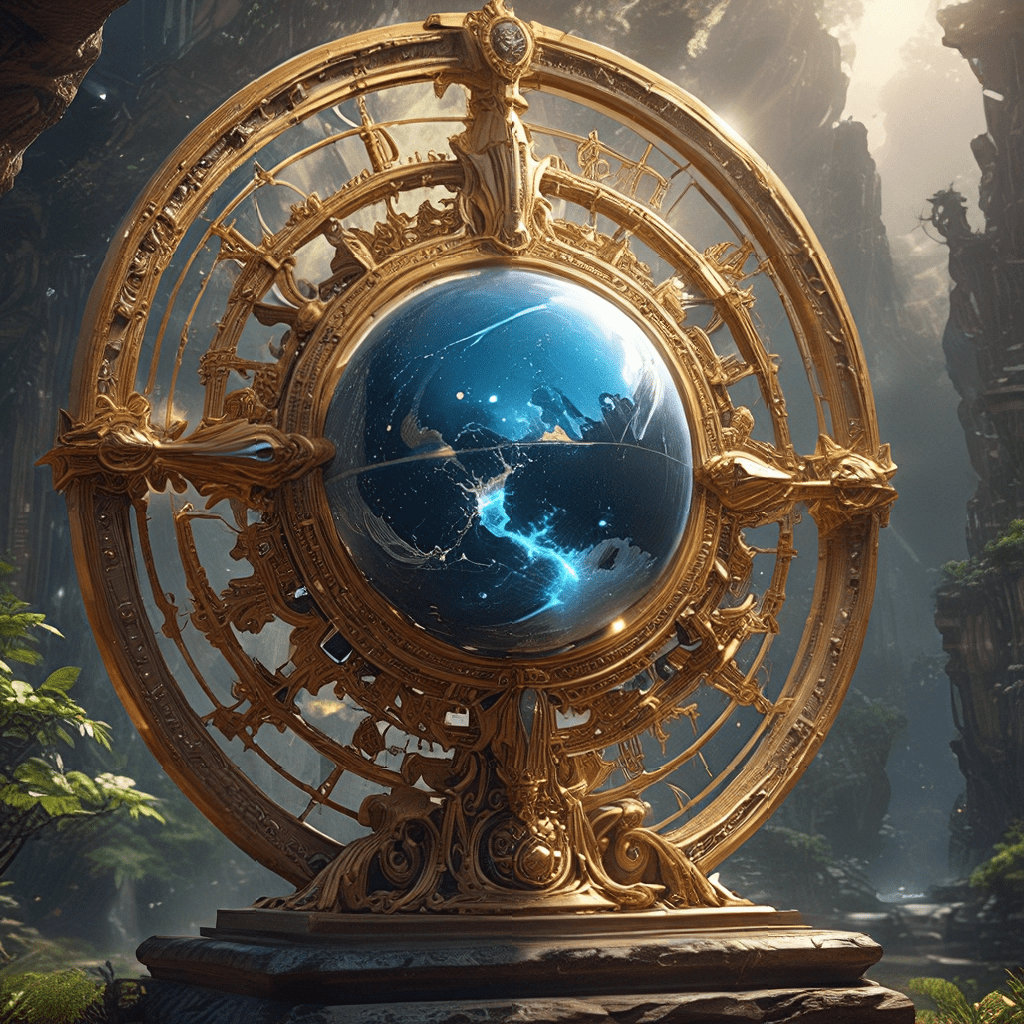The Cosmic Order: Exploring the Search for Balance in the Egyptian Creation Myth
In ancient Egypt, the concept of balance, known as “Ma’at,” was fundamental to their understanding of the universe, life, and death. Egyptians believed that the cosmos was governed by divine laws that ensured harmony and stability. This belief is reflected in their creation myth, which portrays a continuous struggle between order and chaos, light and darkness, and ultimately, the triumph of Ma’at.
1. Introduction: The Importance of Balance in Egyptian Thought
The Egyptians believed that the universe was a delicate balance of opposing forces. This concept of balance was not merely philosophical but was deeply ingrained in their daily lives. They believed that the world was created by the gods and that the gods maintained cosmic order. This order was represented by the goddess Ma’at, who embodied truth, justice, and harmony. Ma’at was seen as the embodiment of cosmic order, and her scales weighed the hearts of the dead in the afterlife, determining their fate.
2. The Primeval Waters of Nun: A State of Chaos and Potential
The Egyptian creation myth begins with the primeval waters of Nun, a vast, formless expanse of chaos and potential. Nun represented the state of existence before creation, where everything was in a state of flux and uncertainty. This state of chaos was not necessarily negative, but rather a state of infinite possibilities. It was within the darkness and formlessness of Nun, that the first god, Atum, emerged.
3. The Emergence of Atum: The First God and the Seed of Creation
From the swirling waters of Nun, Atum, the self-created god, arose. Atum was a solitary being, representing the source of all creation. He emerged from the primordial waters, bringing order and structure to the chaos. Atum was often depicted as a self-created god, and considered the father of all the other gods. He was the essence of the universe, holding within him the potential for all that was to come.
4. The Creation of the World: A Cosmic Dance of Order and Harmony
Atum, through acts of self-creation, brought forth the world. He first created the air, then the earth, and then the heavens. This process, according to the Egyptians, was a continuous dance between order and chaos. Atum, as the creator god, was responsible for establishing the cosmic order, setting in motion a series of events that led to the creation of the world, and ultimately, the emergence of humanity.
5. The Ennead: The Divine Family and the Establishment of Cosmic Law
Atum, through various acts of self-creation or through union with himself, gave birth to the Ennead, the first nine gods of Egyptian mythology. The Ennead represented the essential forces of the universe and their interactions. These gods, including Shu (air), Tefnut (moisture), Geb (earth), Nut (sky), Osiris, Isis, Set, Nephthys, and Horus, were responsible for creating and maintaining a harmonious balance within the cosmos. This divine family was responsible for establishing the laws of creation, the seasons, and the natural world.
6. The Role of Ma’at: The Goddess of Order and Justice
Ma’at, the goddess of order and justice, was a central figure in Egyptian mythology, representing the ideal of cosmic balance. She was often depicted as a woman with a feather on her head, representing truth and light. Ma’at was seen as the embodiment of the divine law that governed the universe. She symbolized harmony, truth, justice, and cosmic order. She ensured that the universe ran smoothly, maintaining balance between the forces of creation and destruction.
7. The Threat of Chaos: The Serpent Apophis and the Perpetual Struggle
Despite the efforts of the gods to establish and maintain cosmic order, the forces of chaos, represented by the serpent Apophis, constantly threatened to disrupt the balance. Apophis was a monstrous serpent who embodied darkness, disorder, and destruction. He symbolized the eternal struggle between order and chaos, light and darkness. The Egyptians believed that Apophis constantly tried to swallow the sun, plunging the world into darkness.
8. The Importance of Ritual and Sacrifice: Maintaining Cosmic Balance
To maintain the delicate balance of Ma’at, the Egyptians performed numerous rituals and sacrifices. These practices were designed to appease the gods, ensure the continuation of the cosmic order, and combat the forces of chaos. Temple priests and common people alike participated in these religious ceremonies, offering prayers, food, and incense to the gods. Their efforts aimed to maintain the balance between the forces of order and chaos, ensuring the continued well-being of the world and the Egyptian people.
9. The Afterlife and the Journey to the Hall of Ma’at: Seeking Justice and Balance in Death
The Egyptians believed that after death, the soul embarked on a journey to the afterlife, where it was judged by Osiris and Ma’at. The deceased’s heart was weighed against the feather of Ma’at, representing truth and justice. If the heart balanced the feather, the soul was granted eternal life in the Field of Reeds, a paradise-like realm. Those who failed the judgment were consumed by the creature Ammit, a monster symbolizing destruction and the threat of eternal oblivion.
10. The Enduring Legacy: The Search for Balance in Ancient Egyptian Culture and Modern Society
The Egyptian creation myth, with its emphasis on the importance of balance, resonated deeply with the Egyptians. Their culture and society were built upon the principles of Ma’at, striving for harmony, justice, and truth in all aspects of life. The search for balance in the Egyptian creation myth and the concept of Ma’at continue to hold relevance for us today. They remind us of the importance of striving for harmony, justice, and truth, both in our personal lives and in the broader world.



